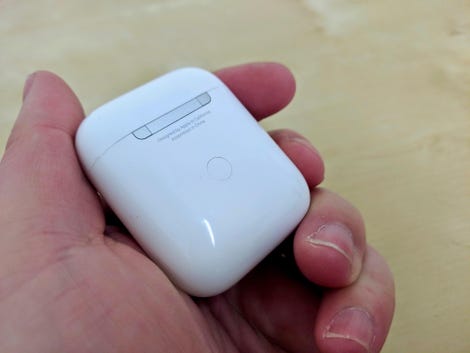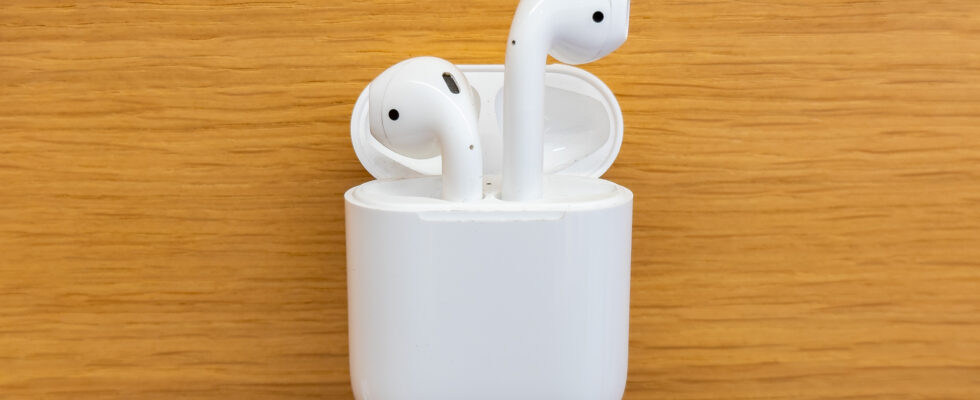Apple’s second-generation AirPods are five years old today, and I’m proud to say I’m using the exact same pair I bought in 2019. And in terms of technology, five years is a eternity.
Now I know what you’re thinking. If your first concern after reading this is disgust (or weird curiosity), I don’t blame you. There are a multitude of viral stories on the Internet about people who have developed fungus in their ears (known as otomycosis) or contracted ear infections from wearing headphones “all the time.” Which makes the prospect of using the same pair of headphones for an extended period of time seem like a bad idea.
To that, I say: don’t be disgusting. Clean your devices. Whether it’s your smartphone, iPhones, or AirPods, part of maintaining them is keeping them clean, which goes a long way to their longevity and functionality. I kept mine clean and never had to deal with fungus, germs or the like.
Don’t lose sight of the headphones themselves
Even if they’ve been submerged in mysterious liquids, crushed, stepped on, or fallen into sewer grates, these devices are actually very durable. The design of AirPods is such that there are very few mechanical elements that can “fail” purely from wear and tear.
In fact, most common problems with AirPods are related to “debris” getting stuck in the ports, being fragile, affecting charging or connections. But this can be mitigated by regular technological hygiene.
Another tip for maximizing the longevity of your AirPods is to not lose sight of the earbuds themselves. These objects are small and slippery, and I try to only handle them if I’m not moving. Don’t try to multitask and take them out of their case while going down the stairs or walking down the street; They will inevitably slip out of your hands and end up somewhere where they will be crushed, stepped on or lost.
The big question of sustainability
Additionally, consider getting a protective case that covers your charging case for a final layer of protection. For around €10, you can reinforce your AirPods against the inevitable crushing they will suffer at the bottom of a backpack or stuck in the cushion of a seat, and protect them against humidity or damage due to shocks if the case is dropped.
Still, digital device makers are pushing consumers to obsessively purchase, upgrade, and replace their products. In fact, keeping the same “outdated” device for years is almost an act of resistance.

Jason Cipriani/ZDNET
It’s obvious that Apple wants me to update my five-year-old AirPods to the latest AirPods 3. They’re better, of course: they have greater noise-cancelling capabilities, they stay in place better in the ear, and have superior audio quality. These are objective facts about the technology, but does that make the older generation completely obsolete, especially if it still works?
The amount of new digital devices available each year also raises questions about sustainability. What do you do with your old devices once you’ve replaced it with a newer, more feature-rich version? Most people know that old appliances can and should be recycled. But more often than not, many devices inevitably end up in the trash, or stored forever in your cupboards.
I never needed to buy new headphones as long as my trusty AirPods worked
The United Nations estimates that in 2023, each person on Earth will have produced on average 8 kg of e-waste, with obviously large disparities between countries, which equates to around 61 million tonnes of e-waste in landfills around the world. . Much of this waste is what researchers call “invisible waste,” that is, waste that makes up a significant portion of landfills but is not considered in development conversations. sustainable.
As you can imagine, discarded smartphones, computers and other electronic accessories make up a significant portion of this waste. And it is estimated that this figure continues to increase from year to year.
I have a pair of over-ear headphones, which serve their purposes, and I’ve never needed to buy new headphones as long as my trusty AirPods worked. And that’s still the case.
Apple can be said to have popularized wireless earbuds, and when the second generation AirPods were released in 2019, they had far fewer competitors than they do today. Only Samsung’s Galaxy Buds matched AirPods in usability and features, and took the opposite position to Apple as a product optimized for Samsung and, by extension, Android phones.
To conclude on the maintenance of your headphones
Today, not only do my AirPods still hold up, but they’re still part of the line of wireless earbuds that dominate the market. The Apple H1 chip inside the second-generation model allows for fast connection for incoming calls and switching between devices, as well as Siri functionality, customizable touch controls, and decent battery life. praise.
Of course, there are many more headphones on the market today, but it’s not for nothing that Apple’s second-generation AirPods remain at the top of sales during every major shopping season.
For 90 euros (which is about 110 euros less than the AirPods 3, by the way), you get a pair of headphones that not only sound good, but are physically capable of lasting if you take care of them. I am proof of that. I wish you five more years of happiness with your devices, or even more.
Source: “ZDNet.com”
